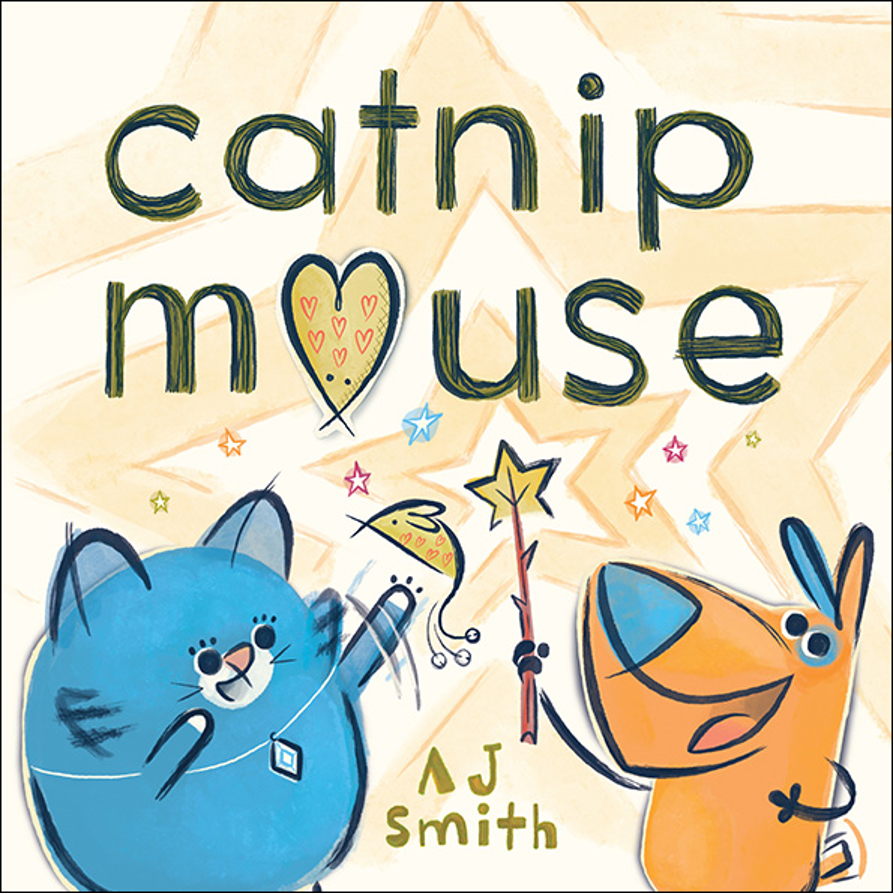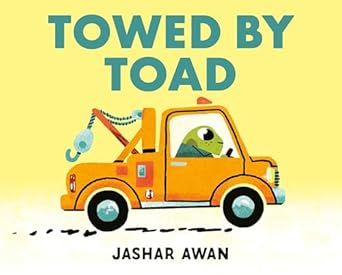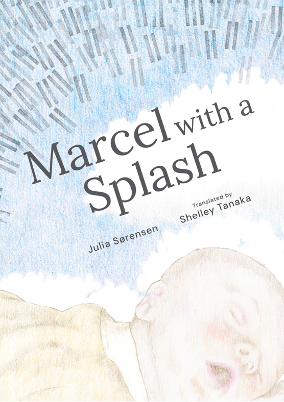Review: Nuts About Scaredy Squirrel : Five Classic Stories
Follow the hilarious antics of our favourite highly-anxious squirrel in this collection of five wonderfully illustrated and beloved stories. Whether he is venturing out, planning a birthday or finding ways to stay up at night, Scaredy Squirrel follows his routines, lists, and exit plans, all the while avoiding potential dangers outside of his nut tree, and when all else fails… plays dead. Nuts About Scaredy Squirrel is the perfect addition to any children’s library or would make a great holiday gift for a child. Although geared to children ages 4 to 8, the large amount of text would make it difficult for younger children to stay focused on the story, and would be better recommended for children starting at least 5 years old. The stories in this collection include Scaredy Squirrel, Scaredy Squirrel Makes a Friend, Scaredy Squirrel at the Beach, Scaredy Squirrel at Night, and Scaredy Squirrel Has a Birthday Party.
Review: Catnip Mouse
This adorably-illustrated picture book features Vera, a cat who just wants to play with her catnip mouse, and Gipp, a dog who just wants to play with Vera, but accidentally destroys her catnip mouse. Gipp uses his magic wand and his imagination to come up with funny rhymes to cheer her up, but only manages to anger Vera, who breaks his wand in anger. Perfect for story time or instruction on social-emotional learning, this book would be the perfect addition to any school library. The story teaches children a lesson on respecting boundaries and how to play nicely with others, and can also serve as a tool to teach children how to deal with their emotions in a healthier way. Written in a comic-book style with panels and text bubbles, Catnip Mouse would also serve as a great introduction to graphic novels for early readers.
Review: Call Me Gray
As a child and their father build a skating rink as their yearly tradition, the child tells their father that they weren’t invited to their best friend’s birthday party because they are not a girl. The child then steers the conversation into opening up about feeling different, but when their father misunderstands, they find the courage to broach the subject of their gender identity. Their father handles the situation with the tact that most queer children looking to come out to loved ones hope for—with quiet acceptance and love. Although Call Me Gray’s illustrations are simple, they fit the ambiance of calm acceptance in the story. This heart-warming picture book would be a great conversation-starter in a classroom discussion on identity and acceptance, and would therefore be a perfect fit for a school library’s social and emotional learning collection.
Review: BALLy the Amazing Wonderball
The show starts and the main star of the show, BALLy, refuses to come onto stage because the audience is filled with dogs. Due to a previous incident involving dogs in the audience, the new participants must “pinky swear” and sign an official contract, promising to “Sit” and “Stay” during the show. However, we all know that “Sit” and “Stay” don’t apply when a ball and dogs come into the mix. Be ready for a silly, laughter-filled good time as you read BALLy the Amazing Wonderball. The illustrations are amusing and bright, and the text is engaging, making this picture book perfect for storytime. It would be a fantastic addition to a classroom, a school or public library, or would make a great gift for a child to read at home.
Review: Towed by Toad
Toad is always eager to help those in need. Whether it's a flat tire or an engine that falls out, Toad is there in a flash. However, when the time comes for Toad himself to need help, he has a hard time accepting it. Toad soon realizes that if he’s in need, he should ask for help. The large print combined with short, rhyming text makes this adorably-illustrated picture book an excellent first read for young learners. It can also be used as a learning tool during story time to teach young children that it’s okay to not have it all figured out and that it’s also okay to ask for help when you need it. Towed by Toad is an excellent addition to an elementary school library, the children’s section of a public library, or for home.
Review: The Boldest White
The Boldest White is the third installment in the Proudest Blue series from the authors and illustrator team, Muhammad, Ali and Aly, about Faizah and her sister, Asiya. Faizah feels safe when she is part of a crowd. She is just as at ease at both Jammah prayers and her fencing lessons. But when her classmates watch her, she freezes up! When her coach suggests she compete in an upcoming tournament, Faizah doesn’t know if she can do it. The Boldest White is a sweet story about learning to be brave. The text is simple and age appropriate. The artwork is engaging, with bright, warm colours that show Faizah’s mood and world. There is a particularly lovely spread that features one the book’s central messages about Faizah learning to nurture her bravery in her heart and mind. This heartwarming, diverse read centres a Black Muslim family and their community. Appropriate for children 4-9. Other titles in the series: The Proudest Blue; The Kindest Red.
Review: The Ballad of Darcy & Russell
The Ballad of Darcy and Russell tells the story of high-school seniors Darcy and Russell as they grapple with their feelings for one another after having met quickly. Together, they navigate a romantic whirlwind and grapple with their own personal aspirations during a pivotal time in their lives. The story lacks depth in terms of how it depicts Darcy and Russell’s relationship, and I found it dragged on and was difficult to finish. I think it could be a good addition for a library’s collection and is a book that is best suited for children above the age of 11.
Review: The Afterdark
Evie has an identical, evil twin sister. After said twin’s unexpected death, their emotionally withdrawn mother packs Evie off to the prestigious and remote Northcroft Academy, a boarding school on an island off the Pacific Northwest coast, where her father, who refuses to see her, is the principal. Enter Holland Morgan, teen star, Evie’s childhood crush, and now roommate. A queer horror/love story exploring themes of female rage, obsession, and the inherent urge of teenage girls to think they’re the monsters, The Afterdark takes place in a rich, atmospheric and decaying setting complete with ivy-covered walls, towering, vaulted ceilings, and stained-glass windows. The mystery elements are well-constructed and engaging. The Afterdark is a lot of fun, leaning equally into gothic romance and horror elements. I did wonder at the lack of attention–media, parental, or otherwise–after so many student disappearances, particularly as the students are well-off and well-resourced, a good combo to kick up a fuss. Recommended for ages 14 and up for its honest, unrepentant swearing and some steamy moments, The Afterdark would make a great addition to any school or public library.
Review: My Grammie’s House
A child walks down memory lane as they describe all the great features of their grandmother’s house to potential buyers. Throughout the tour, we get a glimpse of the love the child has for their grandmother and her house, as well as all of the moments that make a house a home. Canadian author Lana Button really addresses the topic of change in a delicate way that young children can understand. Whether a loved one is moving or has passed away, this delightfully illustrated picture book can serve as a great conversation starter with young children. My Grammie’s House would be an indispensable addition to any child-focused library.
Review: Fantastic Lou: Little Comics from Real Life
Fantastic Lou tells the story of Lou, an adventurous and curious boy with boundless creativity, playful dance moves, and a unique zest for life. Each comic lets us peer into the beautiful chaos of Lou’s day-to-day adventures. Whether he is waking up his parents in the middle of the night, role-playing as a ninja, or listening to mom’s bedtime stories, we get to revel in these silly moments alongside him. With her graceful and simple illustrations, Qin Leng perfectly captures the raw, sentimental, and whimsical essence of youth that is found in the everyday moments of childhood. This hardcover graphic novel is inspired by real-life moments and is written for those ages 5 to 9. As an adult, I found myself feeling a warm sense of nostalgia when reading this book. These simplistic yet thoughtful comics are drawn in a linework style accented with a light blue pop of colour. Fantastic Lou is suited for those looking to explore themes of family dynamics, children’s self-expression, and the wonders of childhood.
Review: Dangerous Memory: Coming of Age in the Decade of Greed
This important nonfiction title reads like a memoir but is infused with historical information and guided by an intimate understanding of the bigger picture. Charlie Angus, a former punk rock band member and current Member of Parliament, recounts his experiences as a young adult in 1980s Toronto. The stories are compelling and interesting, and connected to current topics of great public concern. Today's situation is explained by decisions made in the 1980s (some of which are shocking in hindsight). There is hope, however, that the knowledge of these beginnings (Dangerous Memory) will arm current activists to take a stand and turn against the current tide. A must-read for any disillusioned Canadian, this book will resonate most with adults who have lived through the 1980s. Some mature teens may find relevant parallels, as well. Footnotes and a bibliography provide sources. Some historical photos are included.
Review: Boy Here, Boy There
After a long journey to a new home, a boy explores the valley around him. Filled with a sense of wonderment and exploration, the boy admires the animals, nature, and people he encounters. Boy Here, Boy There is a look into what a day in the life of a young, prehistoric child might have been like. The beautifully illustrated two-page spreads are illustrated in what look like soft, brush-like strokes, imbuing us with the feeling of the calmness that nature brings. The text itself does not seem to match the beauty of the illustrations. The way the book is written seems to imitate the way a prehistoric person may have spoken, giving the story an unfortunate mocking-like quality. Despite this, this picture book could serve as a good introduction to prehistory in the classroom. The book also includes an author’s note at the end with more information on prehistoric peoples.
Review: Baby Animals Trying : a Celebration of First Moments
Baby Animals Trying is an adorably illustrated picture book about baby animals trying new things. From the moment baby rabbits first open their eyes to little orangutans learning to move through the trees, their parents are with them every step of the way. Although the premise is great, the book’s formatting can leave readers slightly confused. Every milestone is depicted on a two-page spread. On the left page, readers are presented with a rhythmic story. On the right page is information about the baby animals’ milestones. There is little difference in font size and type that would help make the distinction between these two pages more apparent. A preface explaining the two ways the book can be read or even little “factoid bubbles” for the non-fiction text would be helpful. The back matter includes a more in-depth explanation on the animals’ milestones, making the non-fiction text slightly redundant. Due to its confusing nature, Baby Animals Trying would be better suited in a school setting rather than an at-home read.
Review: Amir and the Jinn Princess
This middle-grade fantasy novel follows Amir, a 12-year-old boy who does not want to be heir to his family’s brick-making empire in Pakistan. He just wants to find his missing mother. When he meets Shamsa, a jinn princess, the two strike a deal: she will help him look for his mother in the jinn realm, and he will coach her through a series of challenges as she competes for the jinn throne. Soon, their worlds begin to collide in unexpected ways, and they must learn to trust each other while fighting for change in the face of corruption and greed. The fast-paced plot and climactic reveals keep the reader engaged while simultaneously dealing with the serious themes of familial obligation, grief, and vulnerability. There are no illustrations. This book is suitable for readers 9-12 years of age.
Review: A Witch's Guide to Burning
A Witch’s Guide to Burning is a unique graphic novel geared toward children aged 10 and older. It tells the story of a young witch who was burnt at the stake and stripped of all her magic powers and memories. She is found by a wandering witch and a goofy frog who care for her wounds and join her on an adventure to regain her powers. The story weaves together themes of burn out, self care, and found family in a unique way. It can be dark at times, but the storytelling and magical setting balance out the heavier subjects. Despite its vibrant cover, the illustrations are in black and white. A Witch’s Guide to Burning would be a great addition to any elementary school or high school libraries.
Review: The Pony and the Starling
A girl and her mother watch a friendship between their pony and a starling grow from season to season–until a snowstorm looms. The girl puts the pony safely in the barn, but the starling stays outside as the weather threatens. This story explores an unlikely friendship across the seasons from afar. The art is absolutely beautiful, elevating the story and transforming it into a cozy, idyllic depiction of rural life with a focus on two animals. There are no names attributed to the characters nor the setting, giving the story a timeless feel. As it is framed by the girl and her mother’s point of view, the central part of the story –the pony and starling’s relationship–can only be viewed from a distance. It is a narrative that invites in readers' interest and empathy into the lives of animals, domesticated and wild, which is valuable in the context of the immense environmental destruction caused by climate change. The Pony and the Starling is a good choice for public library collections.
Review: The One and Only Question
Zeke is starting at a new school, but one thing plagues his mind–what if someone calls him the N-word? Zeke goes through his day anticipating being called the slur at any moment, just like at his old school. He knows that this is going to be the worst day ever. However, as the day progresses, Zeke realises there is more to life than anticipating the worst. Not only does he make a new friend, but not once is he called the N-word. In response to her grandson asking her the very same question Zeke asks himself, Norma Charles, with the help of her daughter Andrea Charles, wrote this beautifully illustrated book to help address a very big concern that many Black children face when going to school. The authors address this serious topic well and in a way that is developmentally appropriate for young children. A note in the backmatter includes some ways to address bullying and racism for caregivers, teachers, and students. The One and Only Question would be a great addition to any school, public or home library.
Review: Shy Me
Shy Me is the perfect picture book for any child dealing with shyness. Whether it be an “I don’t know how” shy or a “don’t look at me” shy, all children will be able to identify with the young child in this story. All different kinds of “shy” are discussed, along with the message there is nothing wrong with being shy, that children have many other parts to them than their shyness, and a small reminder to try to be brave so they do not miss out on anything. With bright colours and collage-like illustrations, Shy Me would be a good tool to use in social–emotional learning for young children at home or in the classroom and would make a wonderful addition to any children’s library.
Review: Marcel with a Splash
Marcel with a Splash is a tender introduction to children with Down Syndrome. From the time he is brought home to making friends at school, we see Marcel through his parents’ lens. We follow him as he hits milestones at his own pace, makes friends as someone who is neurodiverse, and meets someone else with Down Syndrome. Despite his differences, we learn that Marcel is also just like any other baby or child. The illustrations are drawn in pencil crayon with soft strokes. For a picture book that is supposed to celebrate the joys of having a child like Marcel, there is quite a lot of black and grey in the illustrations. Perhaps it is to highlight both the joys and sorrows that come along with having a child who is neurodiverse. However, as it is a book that is marketed to such a young audience, livelier illustrations and colour may have been a better choice. There is also quite a lot of text for young children. Consequently, I would recommend this book more for children aged 5 to 8. Despite its challenges, Marcel with a Splash would serve as a great tool in discussions of diversity and inclusion in the classroom, and would make a good addition to school libraries.
Review: Everybelly
A child goes to the pool with their mother and encounters a world of bellies. Behind every interesting belly is an even more interesting story. Big, small, round, flat, textured, smooth–all types of bodies and people are illustrated in this lovely picture book by Toronto-based author/illustrator Thao Lam. The spirited illustrations are collages created using different coloured and textured paper. The collages really help to emphasize the different colours and textures bodies have. Everybelly would serve well in an SEL (social–emotional learning) unit on inclusivity and body positivity in the classroom. In a world where children are constantly bombarded with societal expectations and unrealistic beauty standards in the media, this book can help young children see that not only is every body beautiful, there is so much more to the people who have these bodies than their appearance. Due to the amount of text, Everybelly would be better suited for children a little older than the recommended age range of 3 to 6 years old–perhaps for children around age 4 or 5. Everybelly would be a fantastic addition to public, school, and home libraries alike.




















